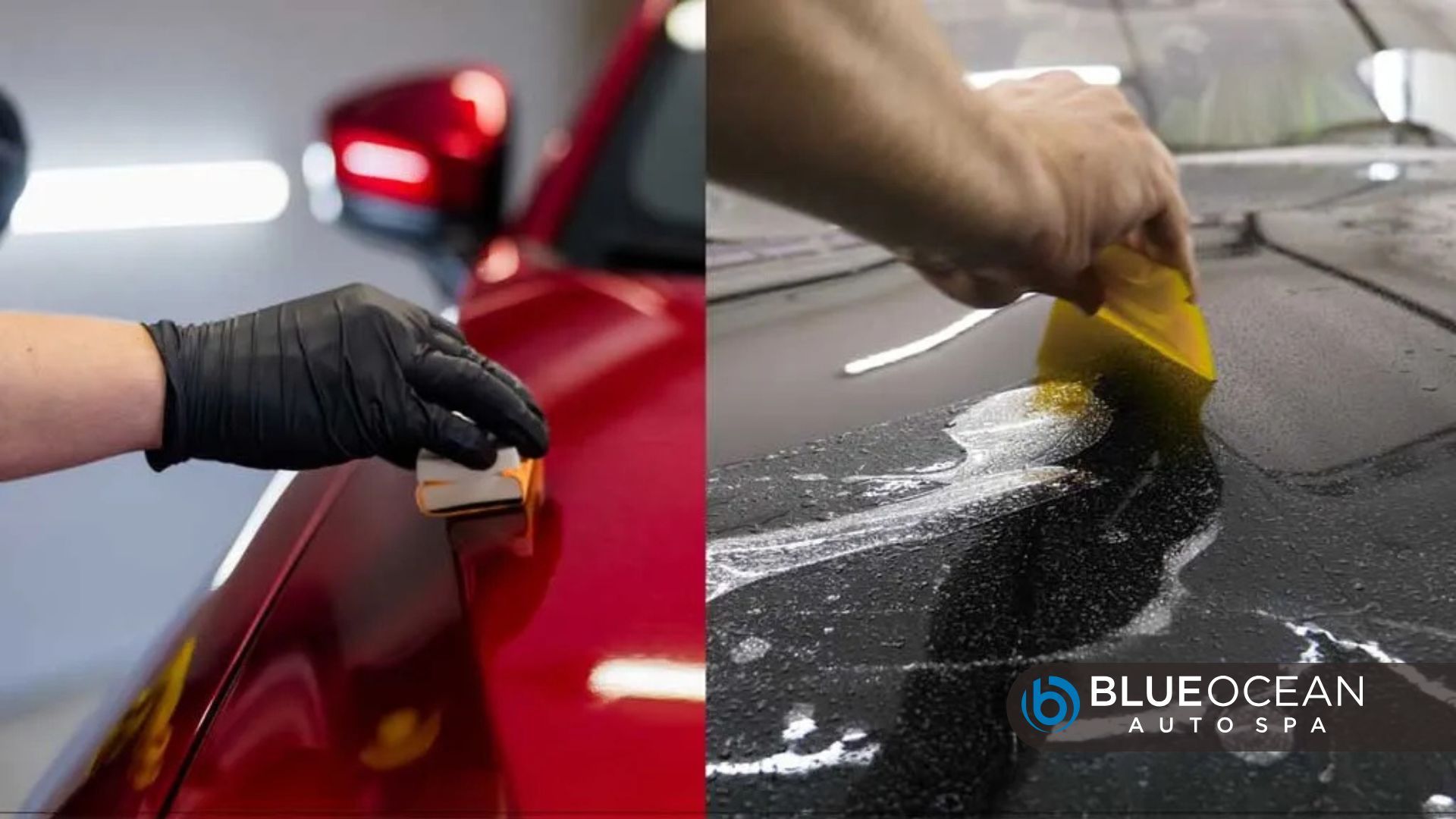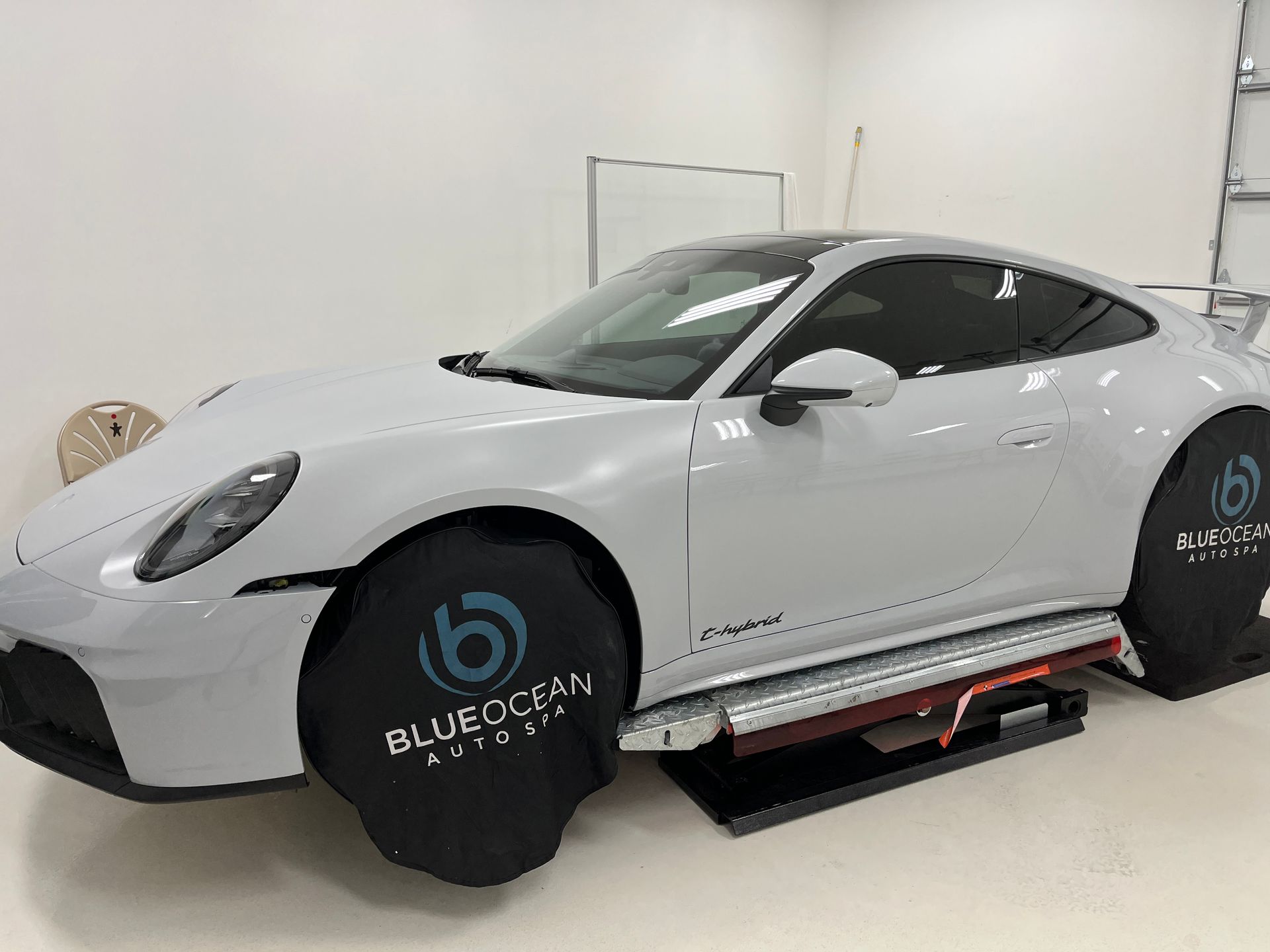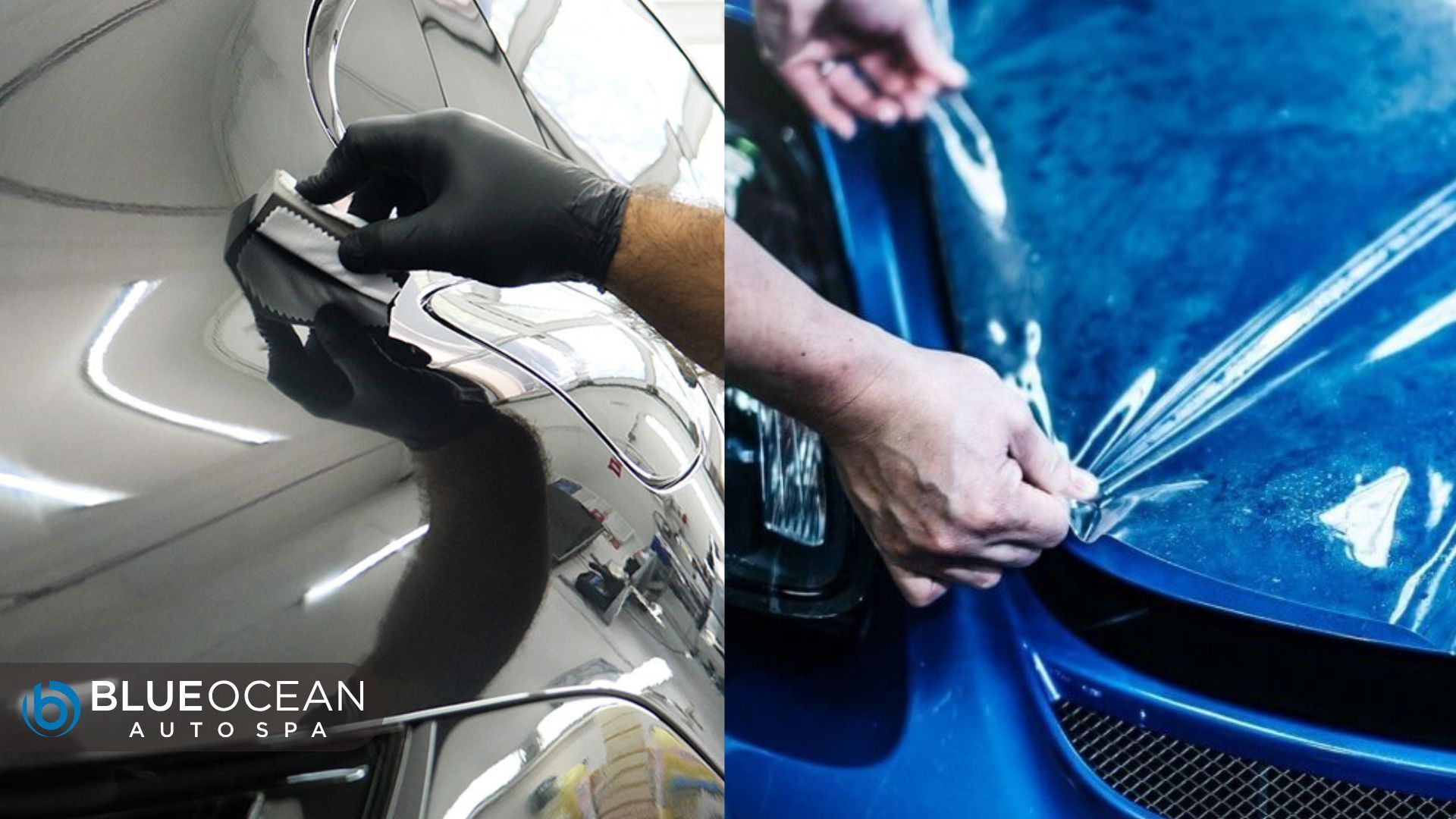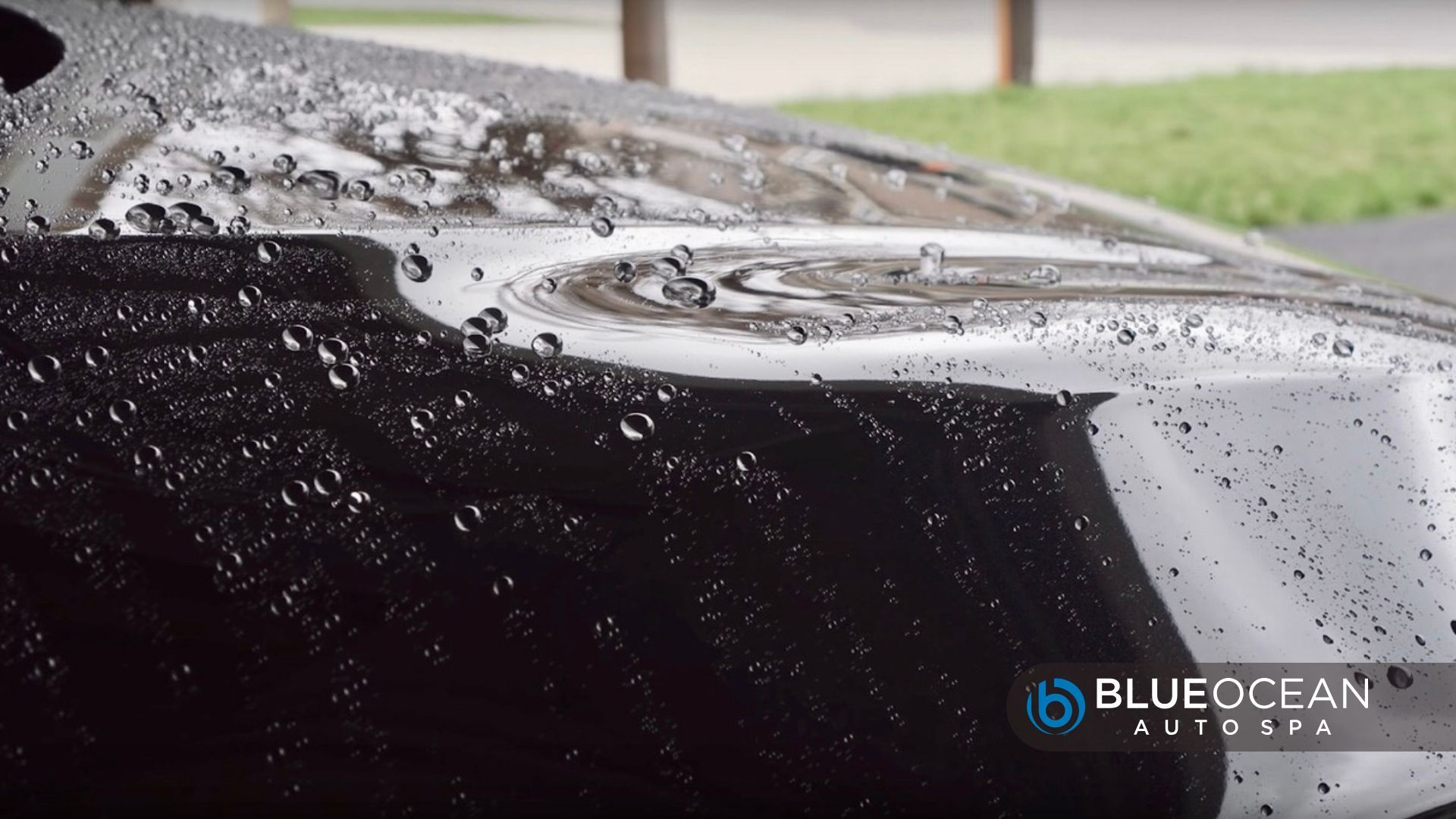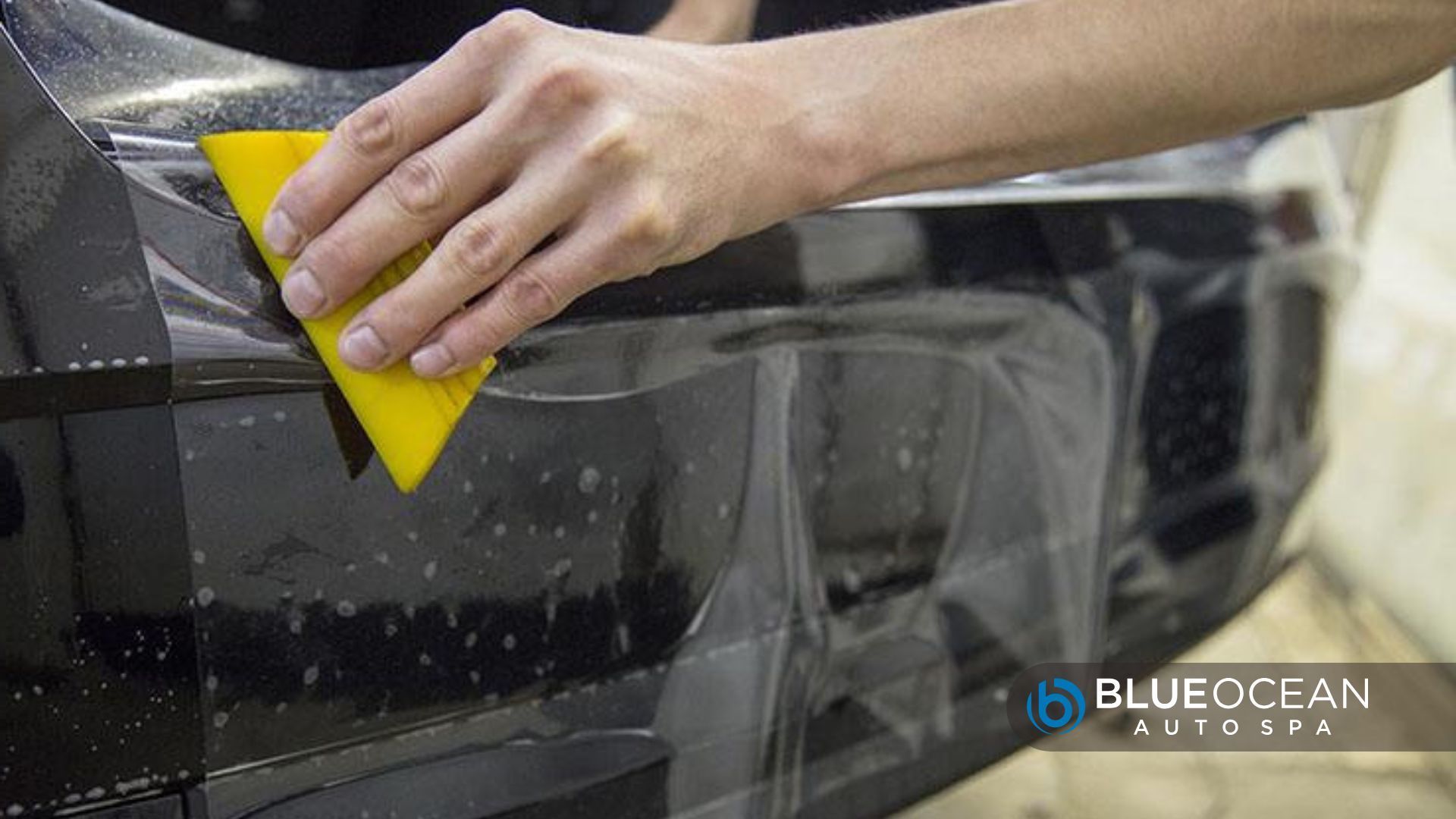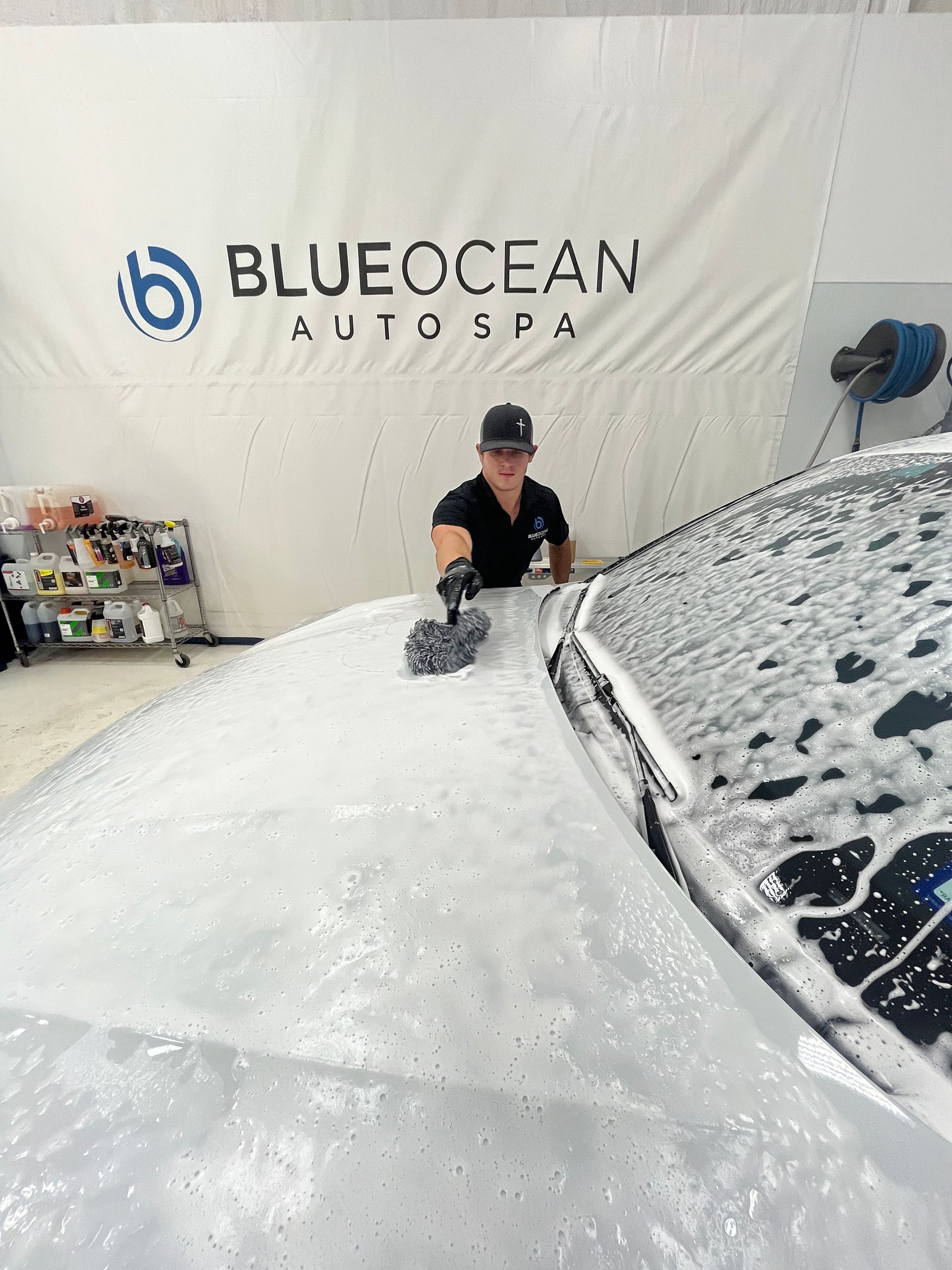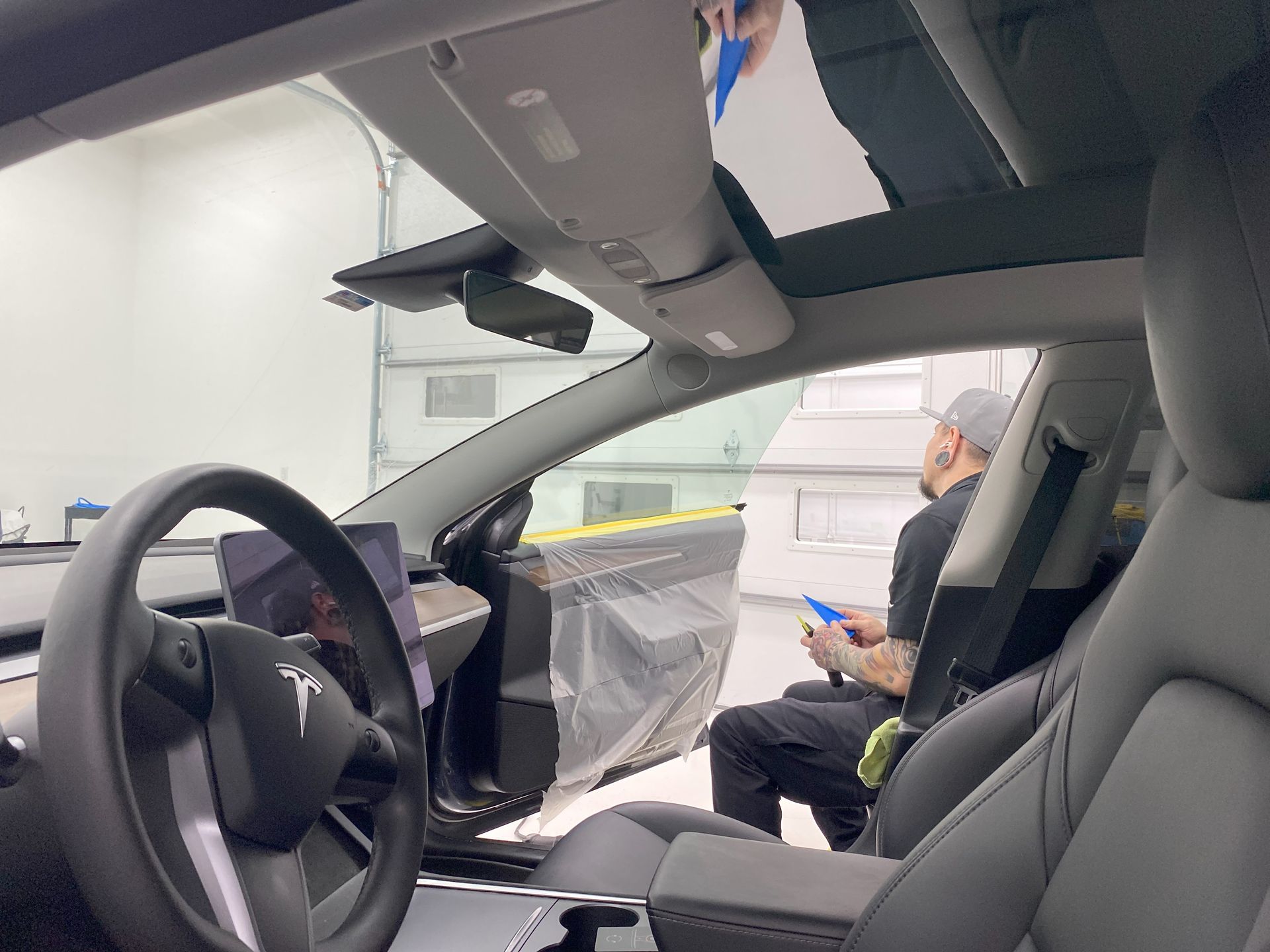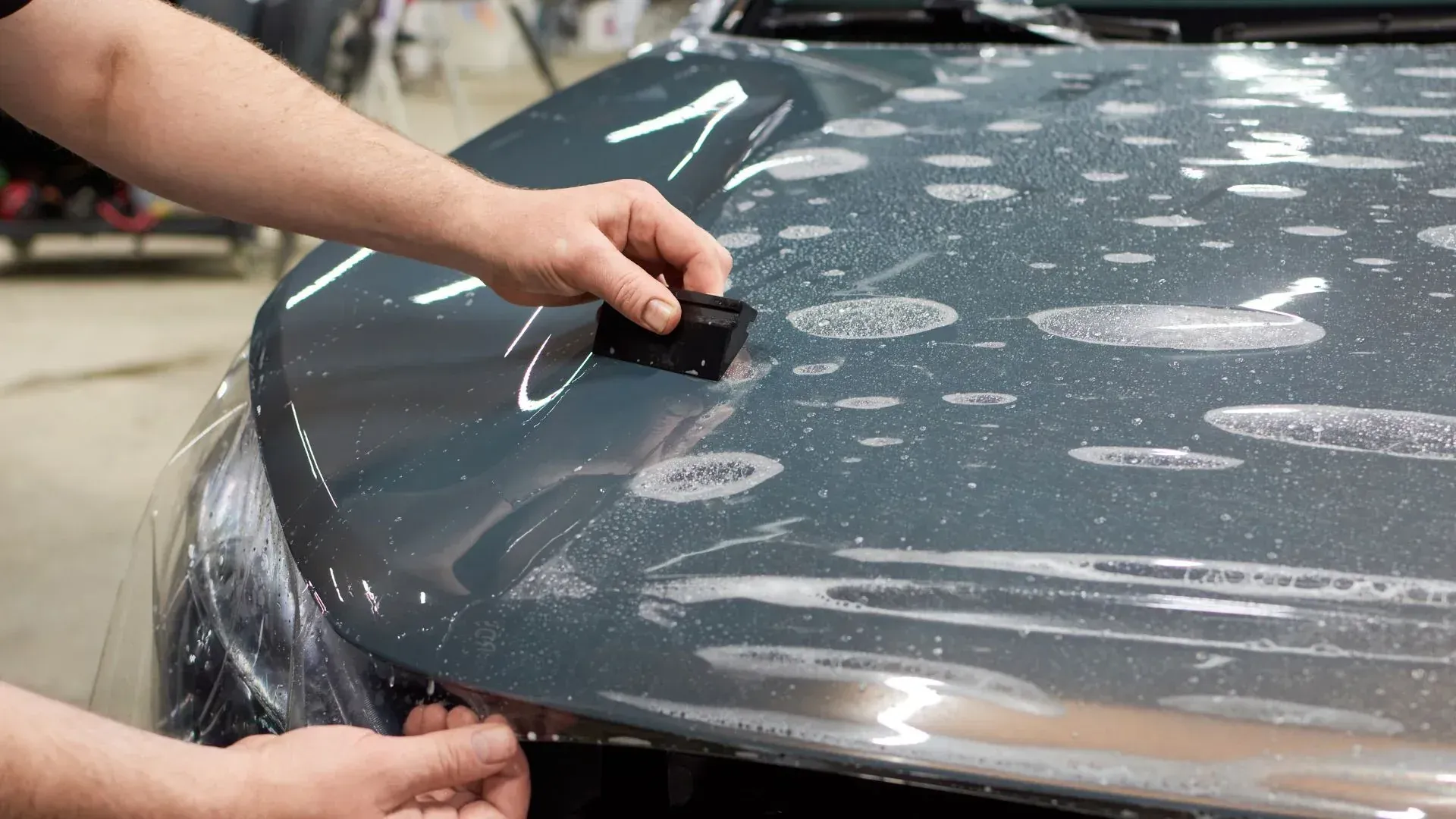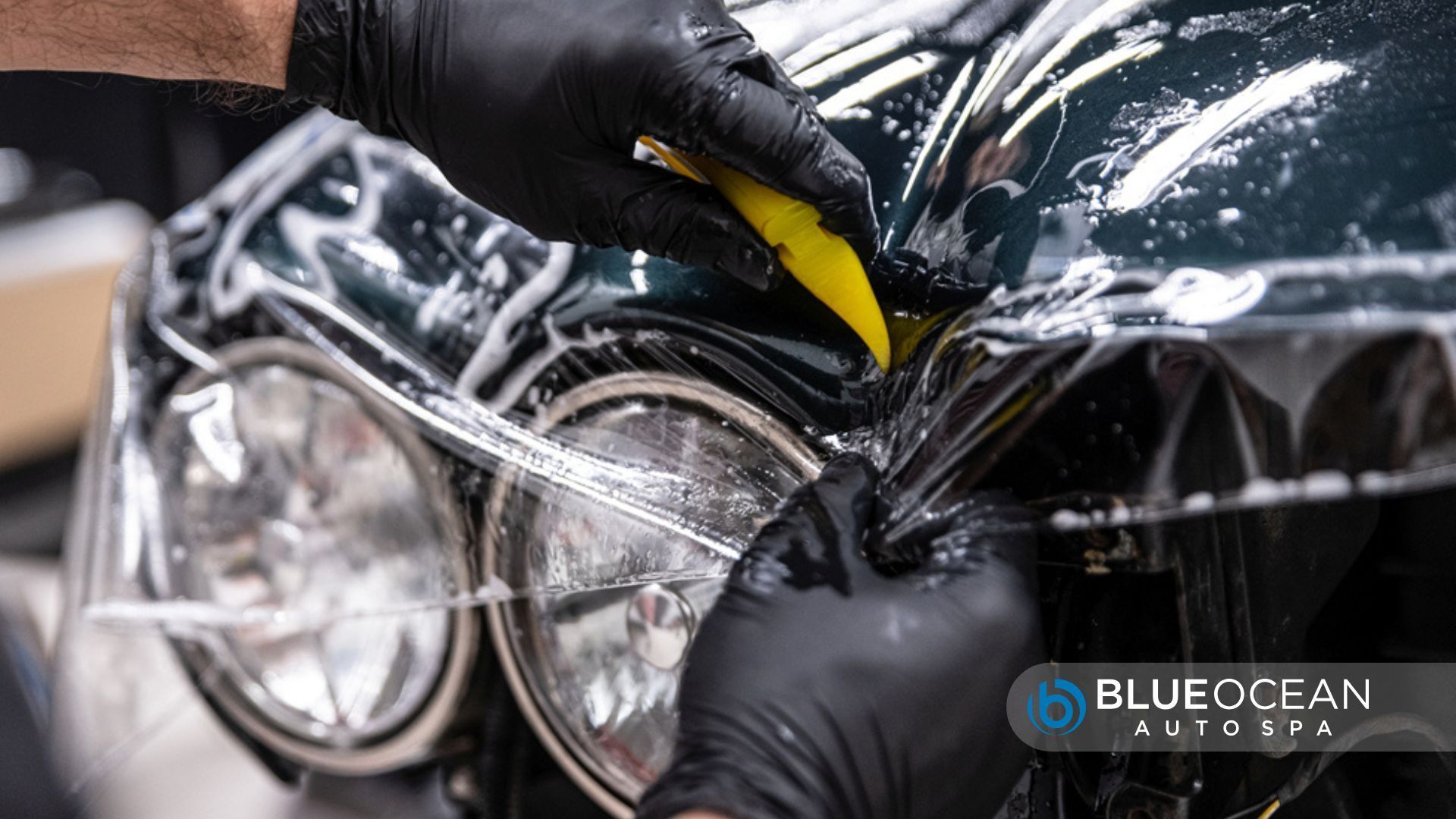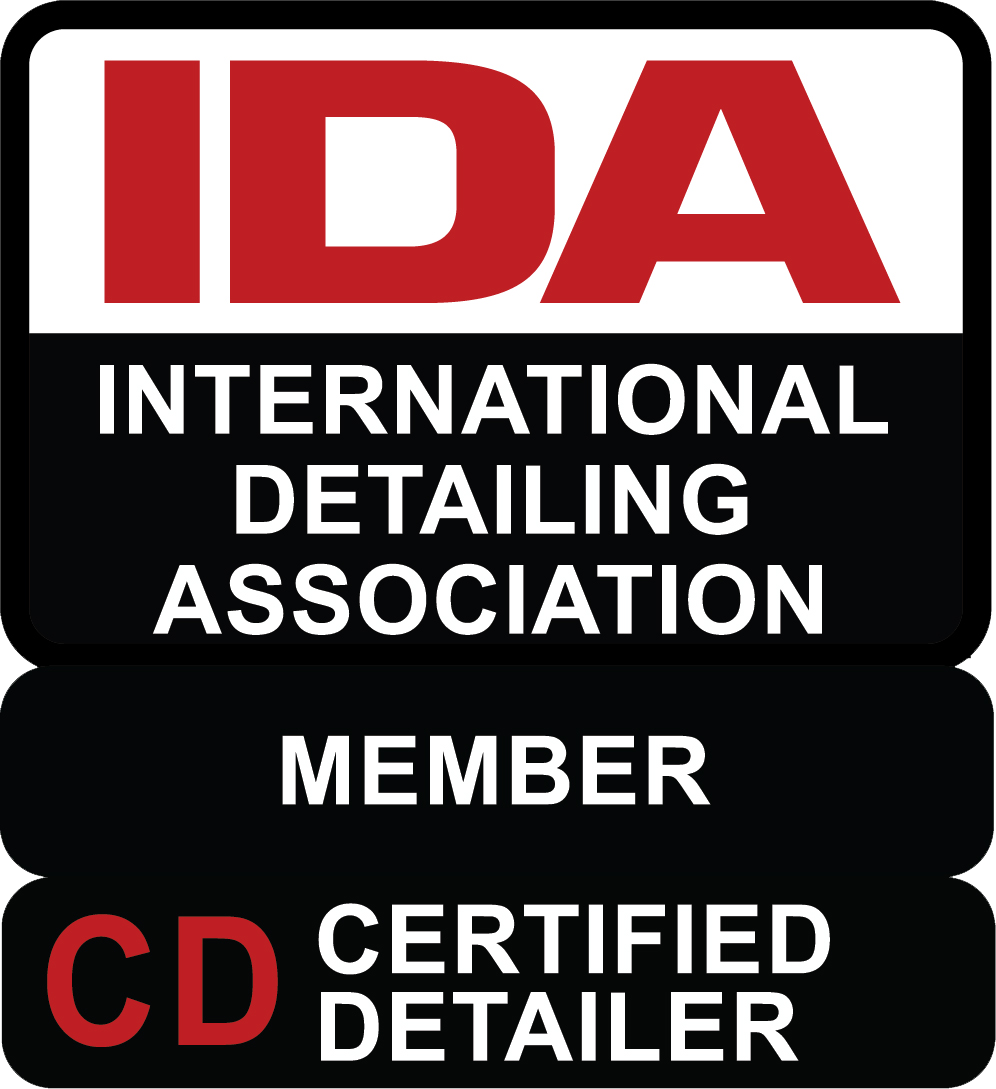Paint Protection Film Myths Debunked – Real Benefits Explained | Blue Ocean Auto Spa Cedar Park, TX
Learn the truth behind common myths about paint protection film (PPF). Understand its real benefits and clear up misconceptions with expert insights from Blue Ocean Auto Spa, Cedar Park, TX.
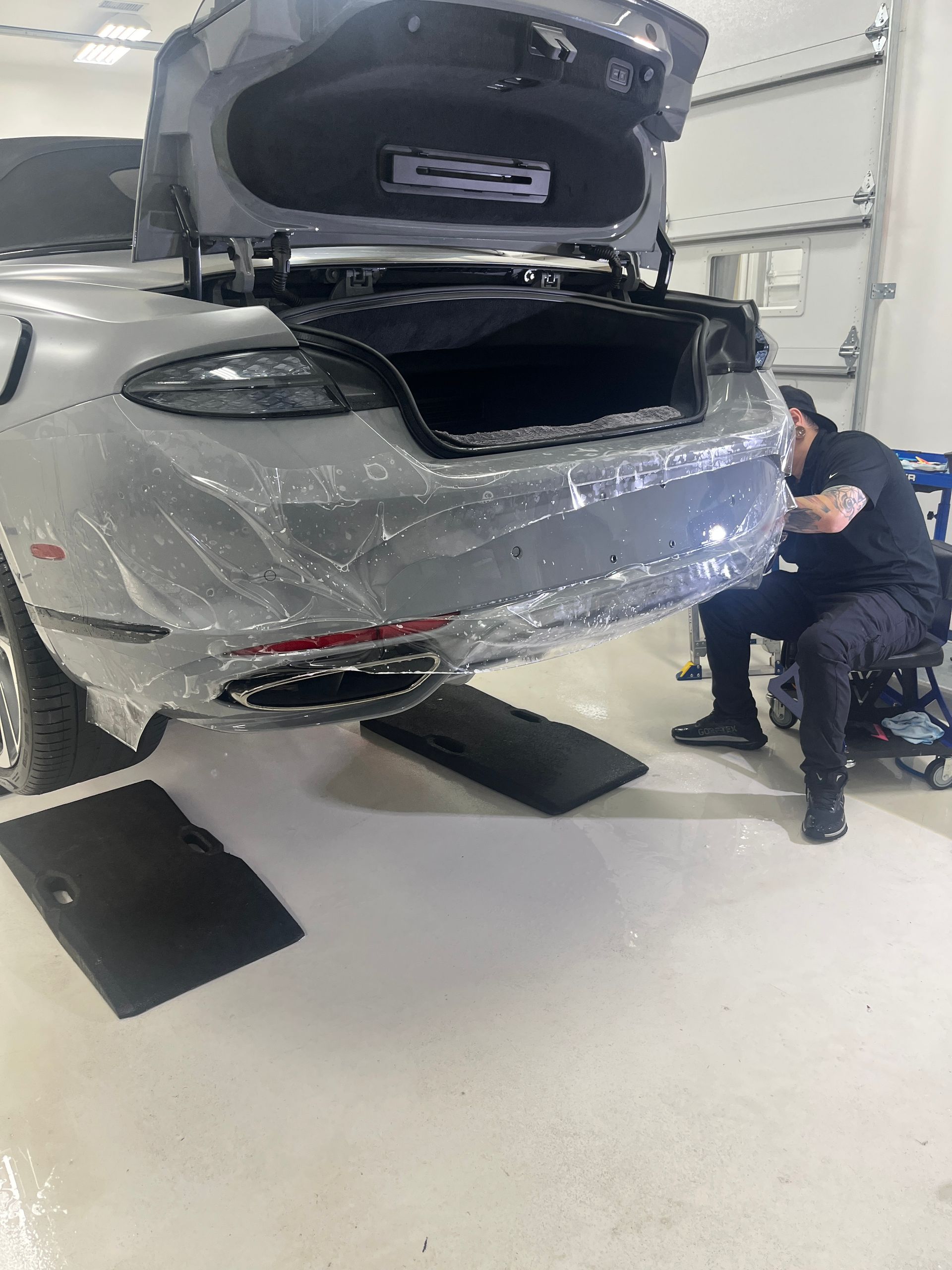
When you walk into our shop at Blue Ocean Auto Spa Cedar Park TX, you’ll often hear folks say: “Is paint protection film really worth it? Isn’t that just a gimmick?” This post is to clear the air — help you understand what PPF can do, what it cannot do, and how to navigate the buying and installation process so you get true value.
By the end you’ll be able to make an informed decision — whether your vehicle is a daily commuter, a weekend cruiser, or a show car — and you’ll know whether PPF is right for you.
What is Paint Protection Film (PPF)?
Let’s begin with a clear definition: PPF is a transparent, thermoplastic urethane (or similar polymer) film that is applied to painted surfaces of a vehicle (hood, fenders, mirrors, door edges, bumpers, sometimes full-body) to act as a sacrificial barrier against everyday hazards.
It was originally developed for military and aerospace applications, then adapted for automotive use.
Modern PPF films are engineered to provide durability and are designed to remain largely invisible.
Its purpose is to protect the original paint finish and preserve the vehicle’s appearance, value, and reduce repairs from road debris and scratches.
Real Benefits of Paint Protection Film
Before we uncover the myths, let’s review the positive side: the real advantages that PPF offers when done properly (with quality film and proper installation).
Protection from chips, scratches & road debris
One of the top reasons people install PPF: to guard against rock chips, gravel, bug-splatter, and other everyday hazards.
Instead of your paint taking the hit, the film absorbs/deflects many of the road debris meaning fewer chips, fewer micro-repairs, better long-term finish.
UV protection, paint-fading prevention, and corrosion resistance
Good PPF films block harmful UV rays, limiting paint fade, oxidation, and protect against elements that degrade clear-coat and paint over time.
Also helps shield from acid rain, bird-droppings, sap and other environmental contaminants. PPF acts as a “shield” against such wear.
Appeal and appearance
A well-protected paint job shows you’ve cared for the vehicle, which helps resale value and trade-in appeal.
Because the original paint stays in better condition, you’re less likely to face major paint correction later.
Low-maintenance, long term payoff
While upfront cost is higher, over time you save by avoiding frequent paint repairs or frequent re-coating.
Maintenance is straightforward: clean, wash properly, remove contaminants; less worry about micro-damage.
Invisible protection — rather than bulky aftermarket covers
Modern films are designed to be virtually invisible once applied correctly, so you get protection without changing the look of your car (unless you choose matte or other finishes).
So: when done right, quality PPF delivers on protection and peace of mind. But — and this is key — it must be done properly, with the right materials, installer, and realistic expectations. That brings us to the myths.
Common Myths & Misconceptions — Debunked
Below are some of the most common myths we encounter, followed by the real truth from industry sources, and what you should watch out for.
Myth #1: “PPF is only for super-cars, track cars or brand-new cars”
“I’m not a performance driver / I’ll never track it so I don’t need PPF.” But PPF is beneficial for any vehicle that you care about keeping in good condition.
Myth #2: “PPF Is Only for New Cars”
Fact: PPF is beneficial for cars of all ages! Whether your vehicle is brand new or has been on the road for year.
Bottom line: If you want to protect your vehicle’s finish and mitigate wear/impact damage, PPF is relevant regardless of age or type.
Myth #3: “PPF will make my car look covered in seams / the film will be obvious”
This can be said of earlier films and less-skilled installations, but modern PPF and skilled installers make seams minimal and finish near-invisible.
Properly wrapped edges can be hardly noticed once installed.”
What to check: Ask installer for images of previous work, check edges, ask about how they treat seams/wraps.
Myth #4: “PPF is a substitute for regular washing/maintenance”
Reality: Some assume if they have PPF they no longer need to care for the paint or wash carefully. That’s false.
Evidence:
Paint Protection Film is helpful, but it doesn’t eliminate the need for routine washing, waxing, and overall maintenance. PPF is protection, not a miracle. Cleaning and maintenance still matter (though you may have fewer worries about micro chips).
Myth #5: “PPF will yellow or bubble / degrade quickly”
Reality: This is based on older generation films (PVC-based) or low-quality installations/materials. Modern films withstand UV and aging much better.
Evidence:
The belief that paint protection film yellows is a misconception rooted in the characteristics of older products. Modern PPF features cutting-edge materials.
What to ask: What product brand, what warranty, what installation methods, what maintenance.
Myth #6: “PPF is too expensive and not worth the investment”
Reality: Yes, the upfront cost is higher than say a wax or sealant, but the long-term value (less repair, better finish, higher resale) often justifies it.
Despite being an upfront investment, it’s cheaper than regularly repainting after issues.
What to look at: Think of this as long-term insurance for your paint finish. If you plan to keep the car several years or care about appearance, the value adds up.
Myth #7: “Once I have PPF I never need to worry about paint again”
Reality: This is an overstatement. While PPF provides a strong shield, it doesn’t make your paint invincible. It also won’t fix existing damage.
While PPF protects, proper installation, correct film choice, and ongoing care are still essential.
What you need: Pre-installation paint correction (if needed), choose the right coverage (full/partial), plan maintenance.
How to decide: Is PPF right for your vehicle & usage?
Here at Blue Ocean Auto Spa we find it helps to ask a few questions — you answer them, we help you decide.
How many miles do you drive per year? More time on the road = more exposure to hazards.
Where do you drive/park the vehicle? High-traffic roads, gravel lots, outside parking all increase risk of chips.
How long do you plan to keep the vehicle? If 3+ years, preserving paint finish matters more.
How much do you care about resale value and appearance? If aesthetics are important, PPF is a strong tool.
What budget do you have, and what level of coverage? Full-body PPF is more expensive; partial (front end, hood, mirrors) is a lighter investment.
What brand/quality/installer are you willing to choose? A quality installation matters a lot more than just the “film cost”.
If you answer “yes” to many of these — it’s likely PPF is a smart move.
Coverage options and real-world scope
Often folks ask: “Do I need the whole car covered? Or just parts?” Here’s how to think about it:
Full Front coverage (front end, mirrors, fenders)
This is a popular cost-effective option: protect the most hazard-exposed zones (hood, front bumper, fenders, side mirrors, door edges).
Pros: Less cost, focuses on the “impact zones”.
Cons: Other areas still exposed; you might get mismatched ageing if some parts are unprotected. Note: Ceramic coating the entire car can help offset this issue.
Full-body coverage
Covers nearly all painted surfaces. Most expensive, but offers maximum uniform protection.
Ideal if you want to preserve the entire vehicle finish, for a long time, or intend to keep long-term.
Hybrid / accent coverage
Sometimes clients choose full coverage only for high-risk zones, or hide-away surfaces such as rocker panels, rear-bumper edges, etc.
It’s about balancing cost, risk, and priority.
Consider the film material & finish
Different brands offer different options: gloss, matte, satin, clear-matte, etc. Ensure the film you pick matches your vehicle’s appearance and your aesthetic goals.
What to expect when you choose Blue Ocean Auto Spa for PPF
Since you’re trusting us with your vehicle’s finish, here’s our standard of care and what makes our service stand out:
Pre-installation consultation
We inspect your vehicle’s paint condition: existing chips, swirl marks, oxidation, etc.
Provide recommendations: Do you need paint correction first? What areas are most at risk?
Review film brands/options, finish choices, warranty, coverage options, cost.
Preparation & installation
Clean the surfaces thoroughly, remove tar/contaminants, possibly polish/paint correct so film adheres to a properly finished surface.
Custom-cut and precisely apply film, wrap edges neatly (doors, hood, bumper edges), minimize visible seams.
After application: allow curing time, provide instructions for initial days (avoid washing for 14 days, etc).
Post-installation care & support
Provide you with maintenance instructions: gentle wash methods, safe products, avoid harsh chemicals or automatic brushes.
Consider inspection/maintenance check-ups; if film shows lifting, bubbling, or edge-peel early we’ll assess under warranty.
Assist with removal/replacement when necessary (quality film + installation ensures easier removal when needed).
Typical questions & concerns (plus honest answers)
Let’s address some common concerns clients bring, so you are fully informed.
Q: “Will the film change the look of my paint? Will it alter the color or finish?”
A: When done properly, film is virtually invisible — especially clear gloss film. You may not notice it at all visually; the car looks like it did prior, just better-protected. A ceramic coating over the entire car is a good rule of thumb to keep the gloss consistent. If you choose matte or satin film intentionally, then it changes the look. One myth was about seams being visible — modern installation minimizes that.
Q: “Does PPF replace a wax or ceramic coating?”
A: Not exactly. PPF is a physical barrier film; coatings like ceramic or sealants are chemical/protective coatings. They can complement each other. Some people apply PPF and ceramic coating for combined benefits (film + coating). Keep in mind that maintenance is still important. One myth is that PPF means “no maintenance” — false.
Q: “How long does it last? Will I have to replace it soon?”
A: With quality film and proper installation, many films have warranties of 7-10 + years. Our film carries a 10 Year Warranty. See XPEL for details. Some earlier films had poor performance (yellowing, peeling), but modern films perform much better.
Still: environment, usage, care all impact longevity.
Q: “Is it worth the cost for a daily commuter vs. a show car?”
A: It depends on your priorities. If you drive a lot, park outside, live in a high-exposure area (gravel roads, high traffic), and care about appearance/value — yes. If the vehicle is low-mileage, garaged, and you’re less concerned about aesthetics or resale, you may prioritize other upgrades instead. We’ll help you evaluate based on your needs.
Why investing in a reputable installer like Blue Ocean Auto Spa matters
Because the outcome depends not just on the film product, but heavily on the installation quality. Here’s what sets us apart:
We select established, reputable film brands and know their specific installation protocols.
We pay attention to pre-installation surface prep (cleaning, decontamination, paint correction).
We treat edges and wrap seams neatly to minimize lifting or visible film lines.
We provide clear care instructions, so you know how to maintain film long-term and protect your investment.
Our goal: you walk away with a vehicle that looks as close to “un-protected new” as possible — only better — and you feel confident the film will hold up.
Summary & bottom-line take-away
PPF does work. It offers real protection against chips, UV damage, fading, and helps preserve the finish and value of your vehicle.
Many of the myths you hear are hold-overs from older film technology or poor installation practices (yellowing, visible seams, “one-time fix” mentality). With today’s materials and quality installers, these issues are largely avoidable.
The decision comes down to your vehicle, your environment, your budget and your goals. If you drive a lot, expose your vehicle to hazards, want to maintain appearance/value — PPF is a very strong option.
But: it’s not magic. It doesn’t replace regular maintenance. It doesn’t hide existing damage. It still needs proper wash/maintenance.
Choose quality film + quality installation + follow care instructions → you get peace of mind and long-term value.
If you’re ready to explore how paint protection film could work for your vehicle, come see us at Blue Ocean Auto Spa in Cedar Park, TX. We’ll assess your car, show you film samples, explain coverage options (partial vs. full), and walk you through cost vs. value for your driving style. Let’s protect your finish — and your pride in your ride — the right way.
